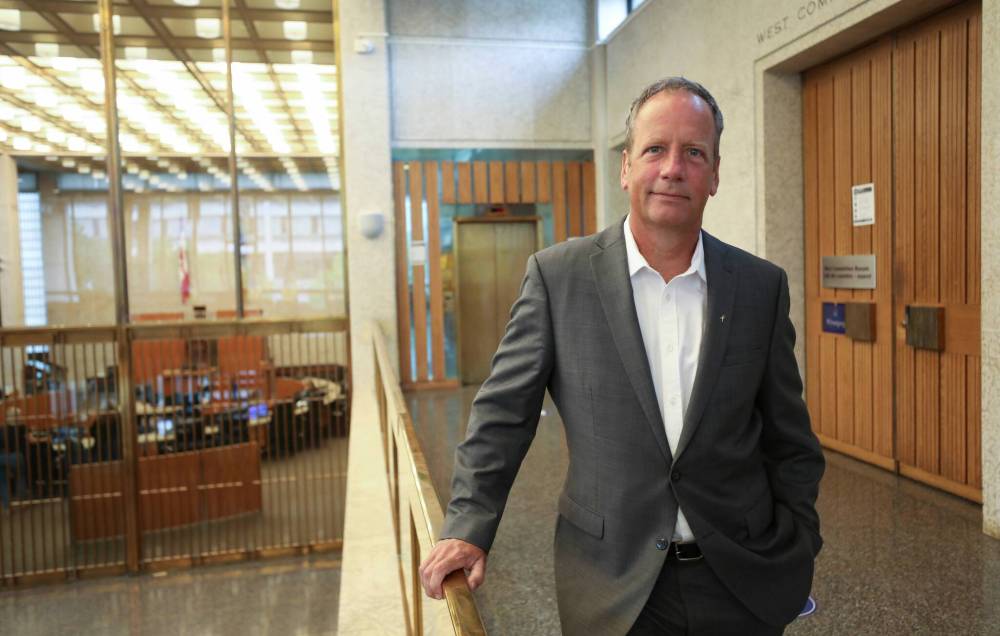City to test green-light project for emergency vehicles
Advertisement
Read this article for free:
or
Already have an account? Log in here »
To continue reading, please subscribe:
Monthly Digital Subscription
$0 for the first 4 weeks*
- Enjoy unlimited reading on winnipegfreepress.com
- Read the E-Edition, our digital replica newspaper
- Access News Break, our award-winning app
- Play interactive puzzles
*No charge for 4 weeks then price increases to the regular rate of $19.00 plus GST every four weeks. Offer available to new and qualified returning subscribers only. Cancel any time.
Monthly Digital Subscription
$4.75/week*
- Enjoy unlimited reading on winnipegfreepress.com
- Read the E-Edition, our digital replica newspaper
- Access News Break, our award-winning app
- Play interactive puzzles
*Billed as $19 plus GST every four weeks. Cancel any time.
To continue reading, please subscribe:
Add Free Press access to your Brandon Sun subscription for only an additional
$1 for the first 4 weeks*
*Your next subscription payment will increase by $1.00 and you will be charged $16.99 plus GST for four weeks. After four weeks, your payment will increase to $23.99 plus GST every four weeks.
Read unlimited articles for free today:
or
Already have an account? Log in here »
Hey there, time traveller!
This article was published 02/06/2023 (912 days ago), so information in it may no longer be current.
The City of Winnipeg will soon test a system that lets ambulances and fire trucks trigger green lights to help them reach an emergency faster.
The city is seeking a contractor to conduct a one-year “small-scale” pilot project involving some intersections, a new request for proposals reveals.
Coun. John Orlikow, chairman of council’s community services committee, said the technology is an important piece of ensuring critical response times are as quick as possible.

KEN GIGLIOTTI / WINNIPEG FREE PRESS FILES
The City of Winnipeg will soon test a system that lets ambulances and fire trucks trigger green lights to help them reach an emergency faster.
“The sooner we get there, the more lives we save. It’s that simple,” said Orlikow.
If the pilot is deemed a success, a second phase could involve citywide implementation of the system across all signalized intersections, according to the request for proposals. The document says the contractor should prepare a pilot project for 10 intersections and 130 emergency vehicles that can be expanded.
Such systems work by pre-empting the normal operation of traffic signals when an emergency vehicle approaches with its lights and sirens activated. Turning on the lights and sirens would automatically send the vehicle’s GPS location to a system at Winnipeg’s traffic control centre. That system would determine the intersection that needs to be adjusted and override normal light timings to trigger a green light.
In November, the city received a MORR Transportation Consulting report that noted such a system could cut some Winnipeg response times by about 20 per cent.
In 2022, a transport ambulance and crew reached a patient in a life-threatening emergency within 19.67 minutes, 90 per cent of the time, up from 16.27 minutes in 2021, 14.93 minutes in 2020 and 14.27 minutes in 2019, WFPS data shows. The wait well exceeds an eight-minute, 59-second target. However, WFPS has stressed firefighter-paramedics still arrive on scene quickly, which allowed an emergency responder to reach a patient within 8.95 minutes, 90 per cent of the time in 2022 for the most serious calls.
Changing signals to speed up response times would come with a cost.
MORR estimated adding emergency vehicle pre-emption could cost between $80,000 and $930,000 per year, depending on the technology chosen.
Orlikow noted Winnipeg Fire Paramedic Service has long deemed pre-emption a critical piece of its council-approved strategic plan, which calls to eventually reduce the number of local fire paramedic stations to 24 from 30.
“It’s being driven by the fact that Winnipeg’s growing and we have some old fire stations that need to be relocated,” he said.
Coun. Sherri Rollins, chairwoman of the property and development committee, also stressed the change must be put in place to complete the strategic plan.

RUTH BONNEVILLE / WINNIPEG FREE PRESS FILES
Coun. John Orlikow, chairman of council’s community services committee.
“I can’t move forward with eliminating stations when the traffic pre-emption isn’t (ensuring) that we can get to (emergencies) in time. So, it’s a vital piece of data to assess what are implied as the next steps… Traffic pre-emption is literally making sure that ambulances and fire trucks are greenlighted to (emergencies),” said Rollins.
In an emailed statement, a WFPS spokesperson said the pilot program would be added strategically to roads frequently used by emergency crews “so we can test the technology and see what impacts (there are) to traffic and response times.”
The spokesperson said the city plans to start the pilot project “later this year.”
Bids for the work will be accepted until June 28, 2023.
joyanne.pursaga@freepress.mb.ca
Twitter: @joyanne_pursaga

Joyanne is city hall reporter for the Winnipeg Free Press. A reporter since 2004, she began covering politics exclusively in 2012, writing on city hall and the Manitoba Legislature for the Winnipeg Sun before joining the Free Press in early 2020. Read more about Joyanne.
Every piece of reporting Joyanne produces is reviewed by an editing team before it is posted online or published in print — part of the Free Press‘s tradition, since 1872, of producing reliable independent journalism. Read more about Free Press’s history and mandate, and learn how our newsroom operates.
Our newsroom depends on a growing audience of readers to power our journalism. If you are not a paid reader, please consider becoming a subscriber.
Our newsroom depends on its audience of readers to power our journalism. Thank you for your support.

